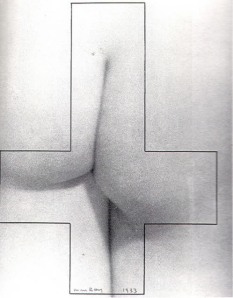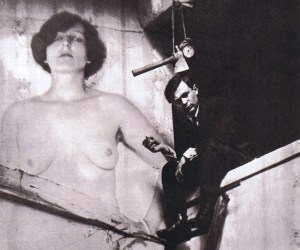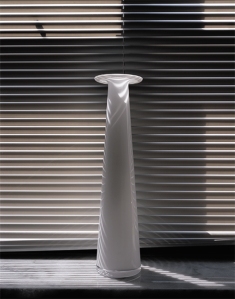Man Ray – Research
Man Ray played a key role in the Surrealist and Dada movements, where he produced paintings, films, objects and photographs. Man Ray’s photographs employ similar photographic techniques to Kansuke Yamamoto’s work. A lot of his photographs use the photomontage technique layering some sort of imagery. The first photograph of Man Ray’s I have chosen is called Monument, our perception of the nude buttocks is changed by the rotated religious cross which serves as an almost phallic symbol, this creates quite an erotic picture, which is juxtaposed against the denotation of the religious cross. The photograph takes the form of a photomontage, and the close up shot blurs our perception of the buttocks creating a surreal effect. These techniques that Man Ray uses have inspired what my final project will look like.
The second of Man Ray’s techniques is his use of angle to bend dimensions much like Yamamoto does in his photographs. Man Ray’s images disorientate the spectator and push the boundaries of the conventional ways of seeing, thus encapsulating this view that Surrealism is attempting to replicate the world of dreams. The woman’s naked body often features in his work, Man Ray presents the body in different perspectives using close ups creating a surreal effect. Using self portraiture in my project could work as the project revolves around my own personal reflections of Kafka’s work and how I interpret it. Self Portraiture is typically seen in Surrealist work therefore it would fit in the context of my project.





